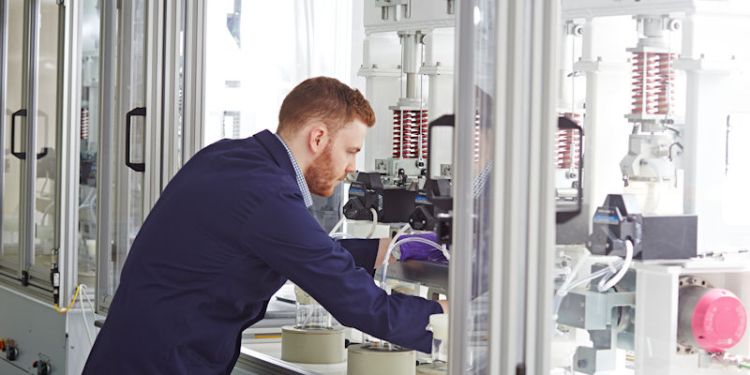Surface engineering
Overview

Lowering the friction between surfaces through improved coatings improves the reliability of engineering components, and creates benefits in many walks of life. Our Surface Engineering research brings improvements in many sectors, from automobile and aerospace, to biomedical and agricultural industries. This results in outcomes such as:
- increased quality of life for recipients of surgical implants
- reduced environmental pollutants in manufacturing processes
- increased fuel efficiency with lower emissions in multi-modal surface transport
- improvements in functional efficiency and safety of products.
At the centre of our Physical Vapour Deposition (PVD) and Plasma Enhanced Chemical Vapour Deposition (PVED), surface engineering activity is the state-of-the-art multi-functional platform. Our vision for this equipment is to drive innovation in the science of future hybrid functional surfaces, and to provide industry with a playground to try new solutions for their current functional surface challenges.
We have expertise in the design, selection and implementation of the appropriate surface engineering solution for a wear, corrosion, fouling, optical or decorative challenge.
Our research
We have studied in depth the optimisation of processes and published in all areas across:
- nitriding (including oxyniriding: QPQ etc.
- Plasma Electrolytic Oxidation (PEO)
- sol-gel and composite sol-gel
- thermal spray (including HVOF)
- solid lubrication systems (including MoS2)
- polymeric systems based on phenolic and PTFE.
Next Generation PVD Technologies
In the past decade we were delighted to recieve Hauzer Flexicoat 850 PVD system, which was the first industrial scale instrument in our institute. Since then we have developed coatings using the new microwave technology, we have developed novel architectures of DLC coatings for a range of applications. In 2019, we upgraded the system to now include a new RF power source, a nanoparticle source (developed by HVM) and an infrastructure to enable the production of oxide coatings. This instrument is unique and is enabling exciting work in:
- Non-stoichiometric silicon oxide coatings as a barrier and for corrosion protection
- Novel architectures for sensing coatings
- Silicon nitride coatings for medical implants
Nanotechnology to Enhance Surface Functionality
In addition to the work on PVD using an industrial scale coating facility we undertake work to develop new functional surfaces for different applications. We are currently working on Slippery Liquid Infused Porous Surfaces (SLIPS) layers for fouling mitigation in oil and gas and for biofouling applications. We are also interested in nanoparticle enabled sol-gel technologies for corrosion protection.
Current research
- Low-friction DLC coatings with incorporated nanoparticles
- Dielectric oxide films for sensor applications
- Solid lubricant coatings for harsh environments
- Functional coatings for 3D printed components
- Advanced micro-mechanical characterisation of thin films
- Optimisation of coating architectures for polymer substrates
- Assessment of coatings performance under fretting
- In-situ techniques for coating degradation measurements
- Tribocorrosion of DLC coatings for oil and gas industry
- Development of bespoke nanoscale layers based on organic and inorganic polymeric systems
- Bioinspired lubrication.
View our projects directory for a comprehensive list of current research projects.
Research team
View all members of our research team and publications.
PhD projects
We have opportunities for prospective postgraduate researchers. Find out more.
Contact us
If you are interested in collaborating with us or joining our research team, please get in touch with a relevent staff member.

